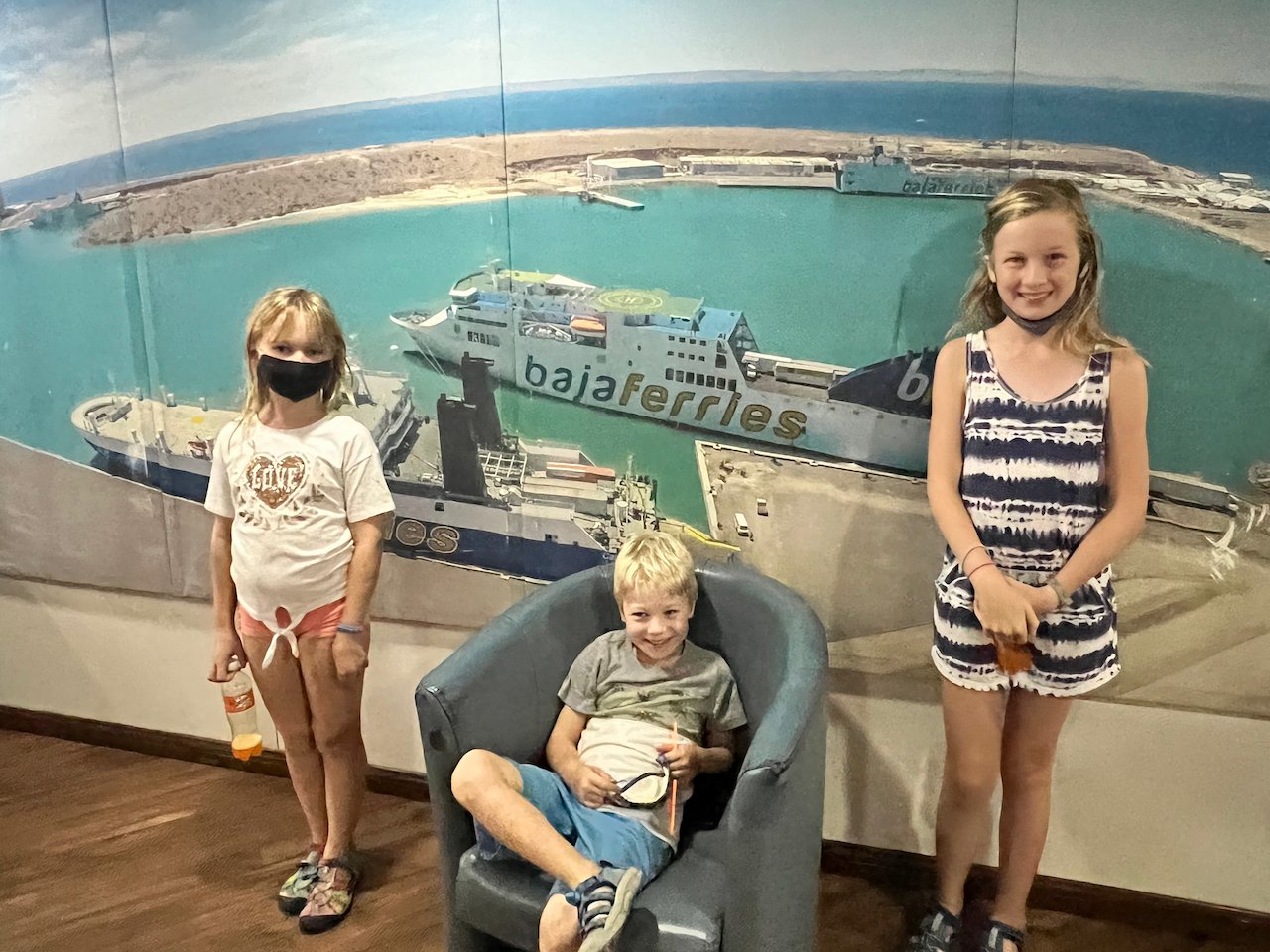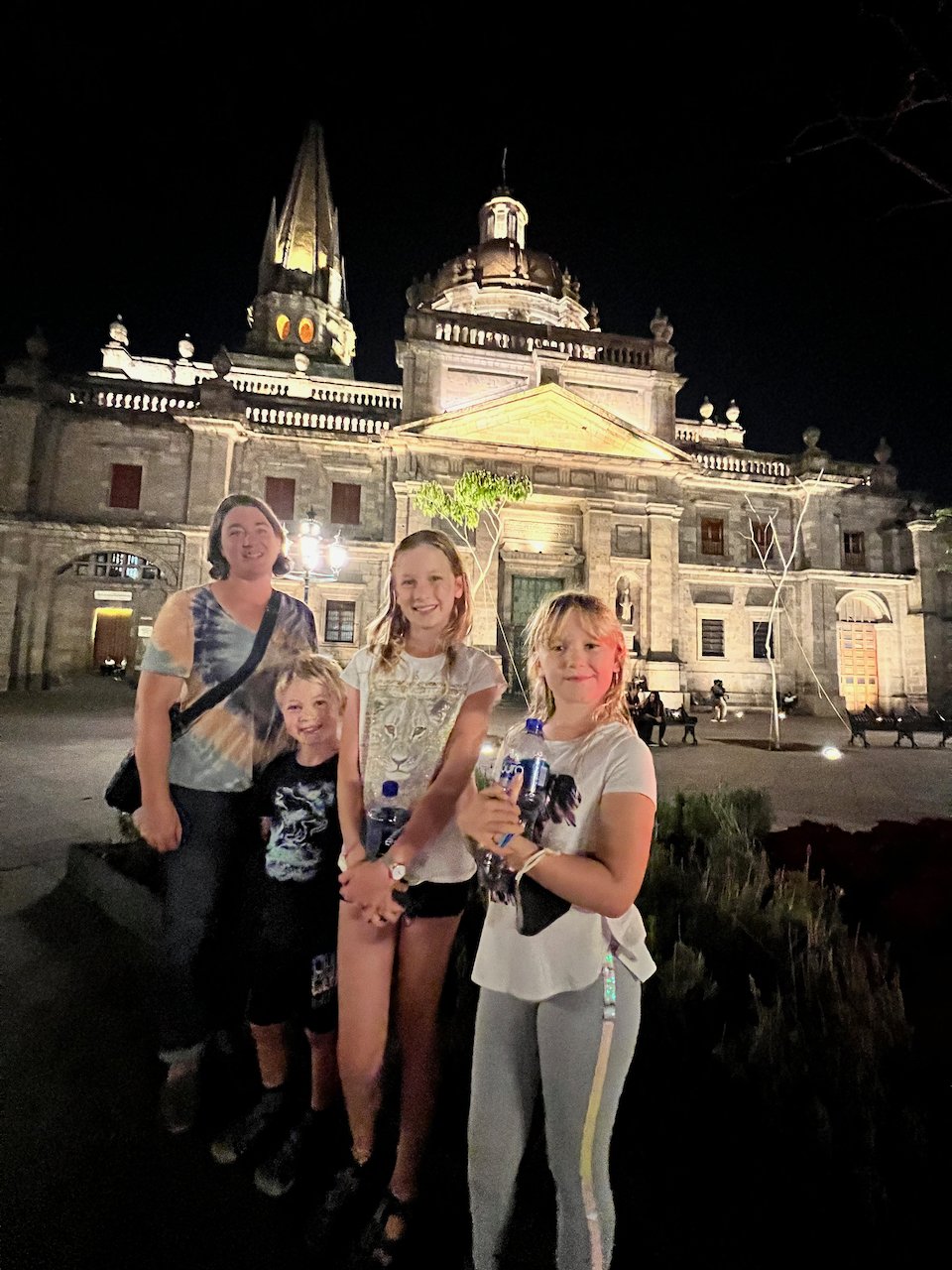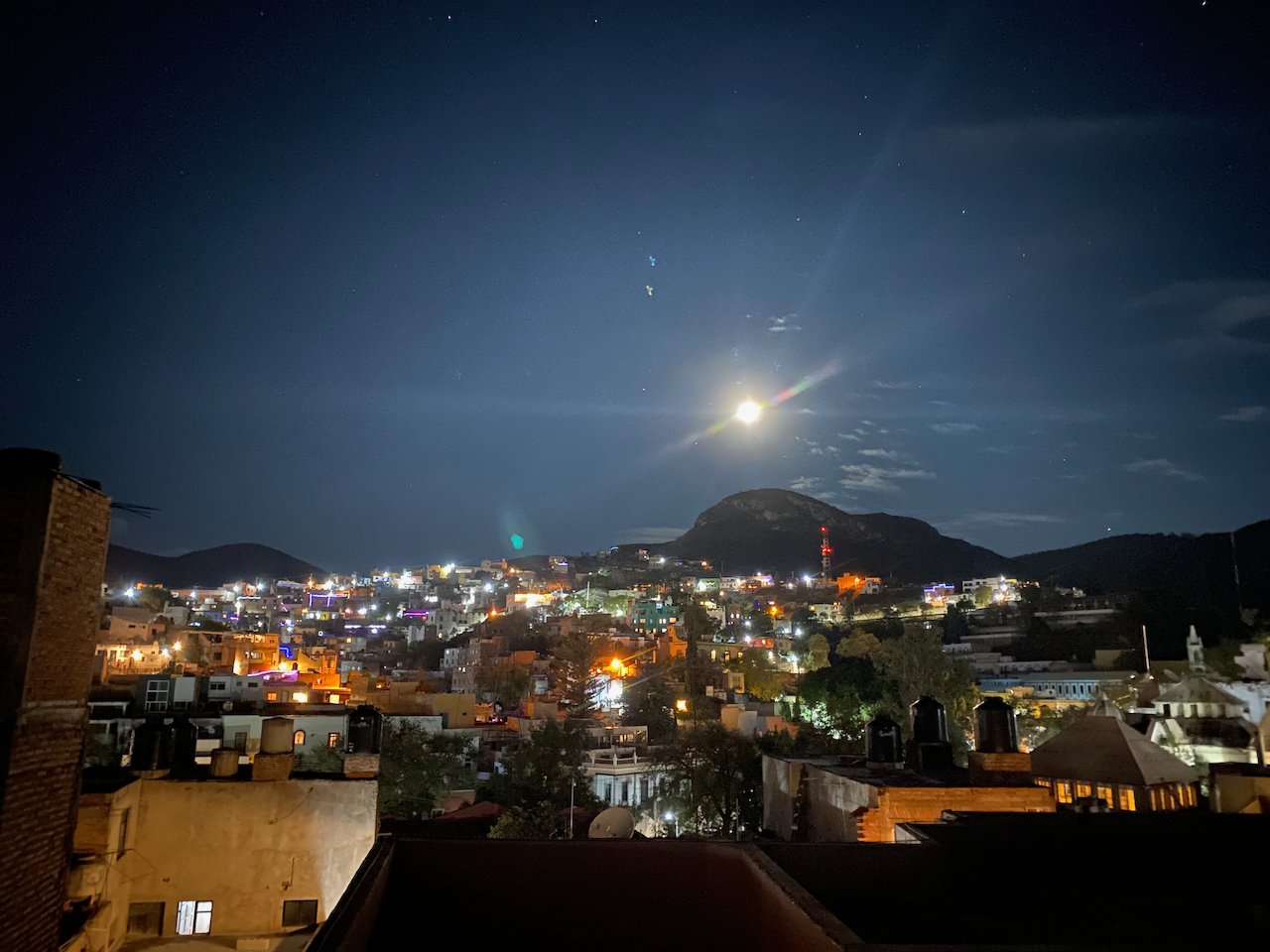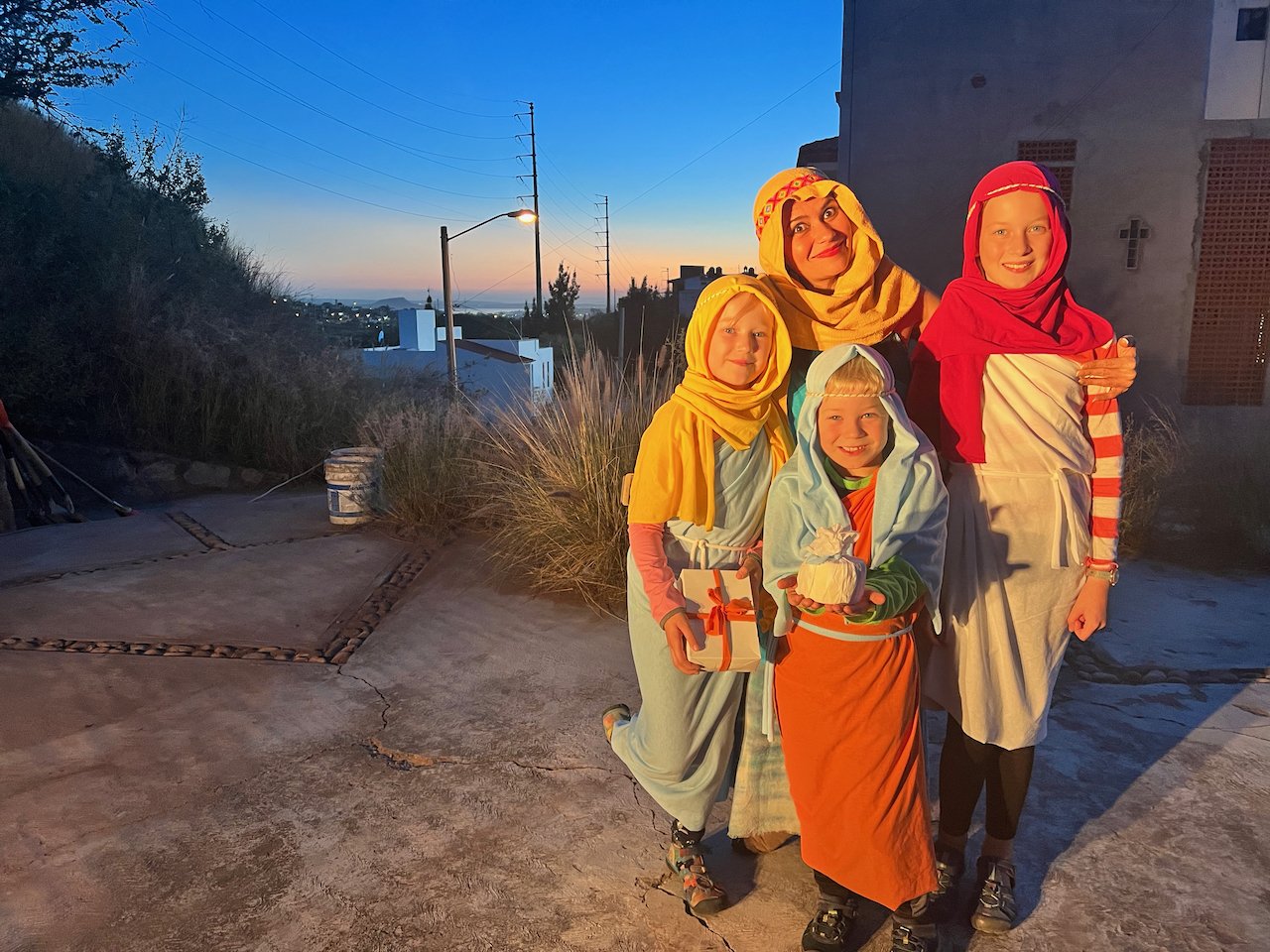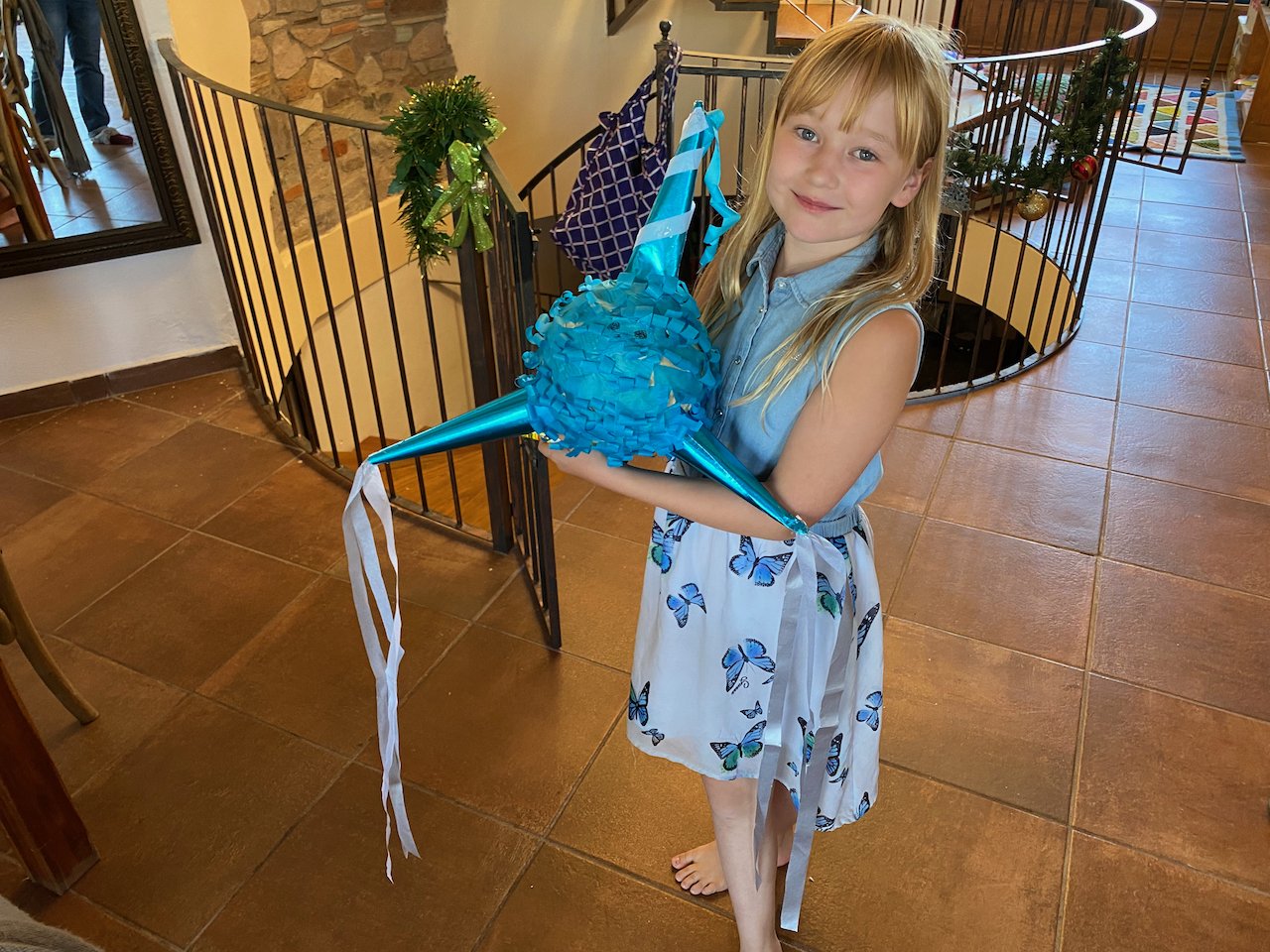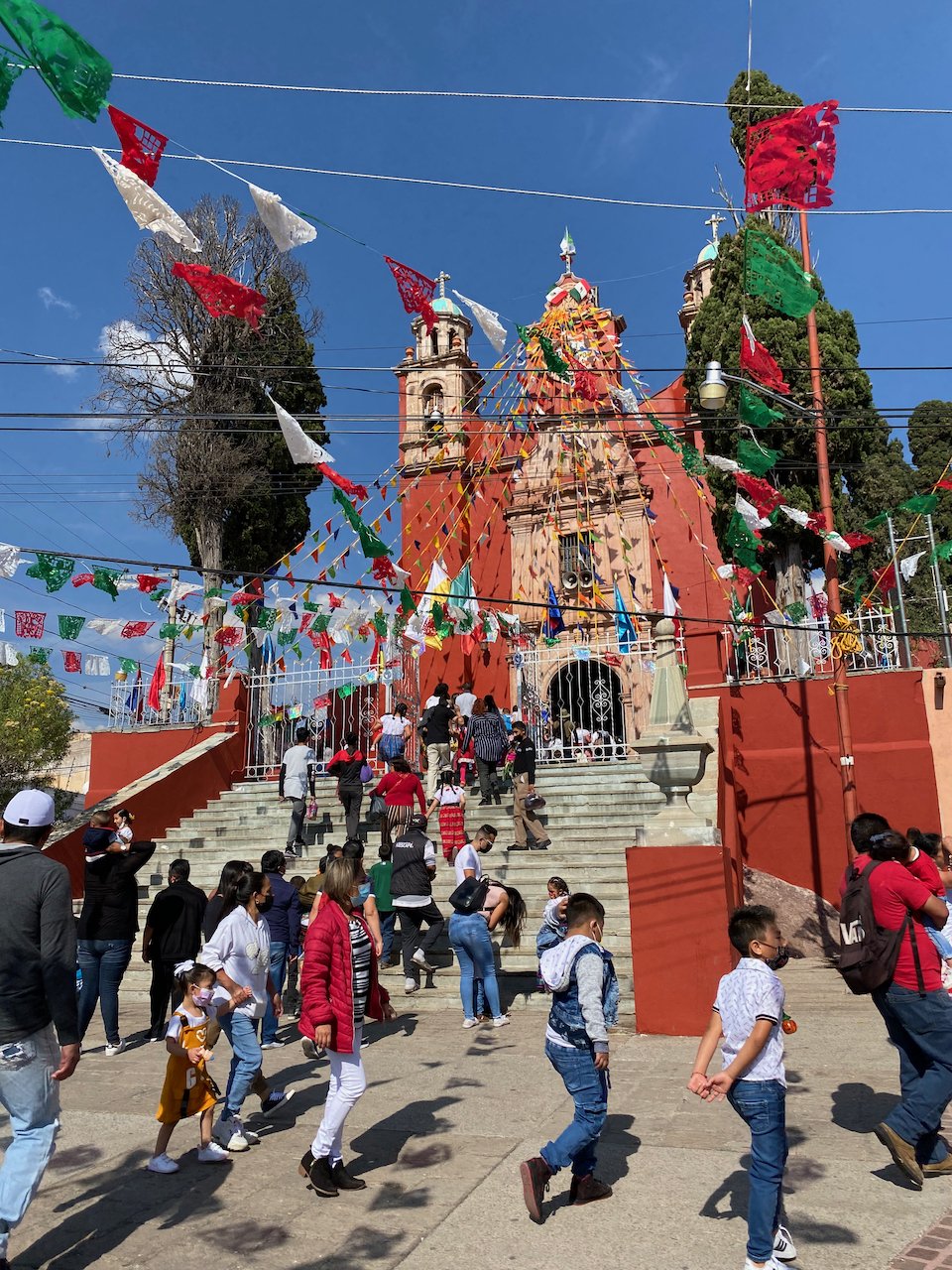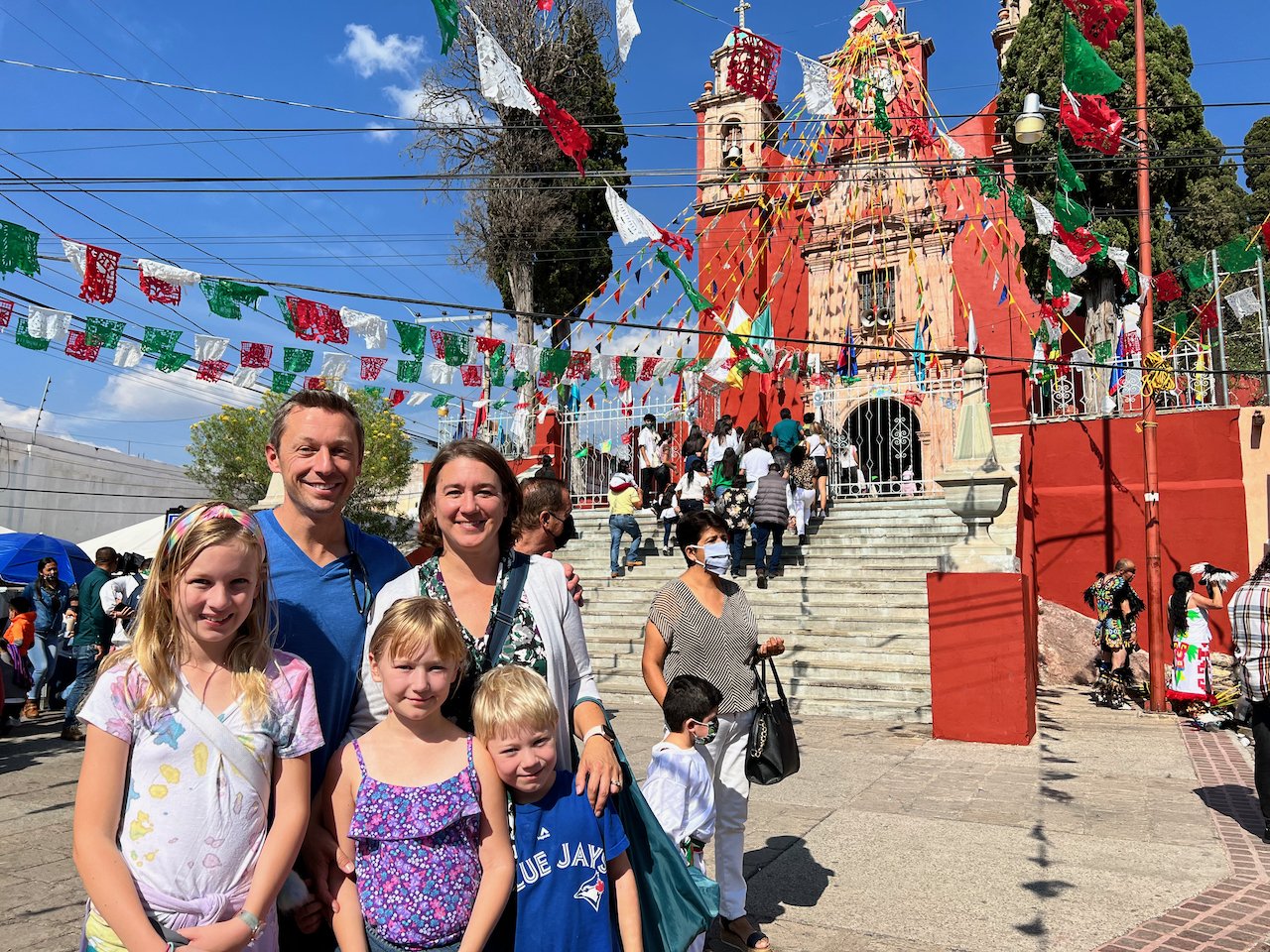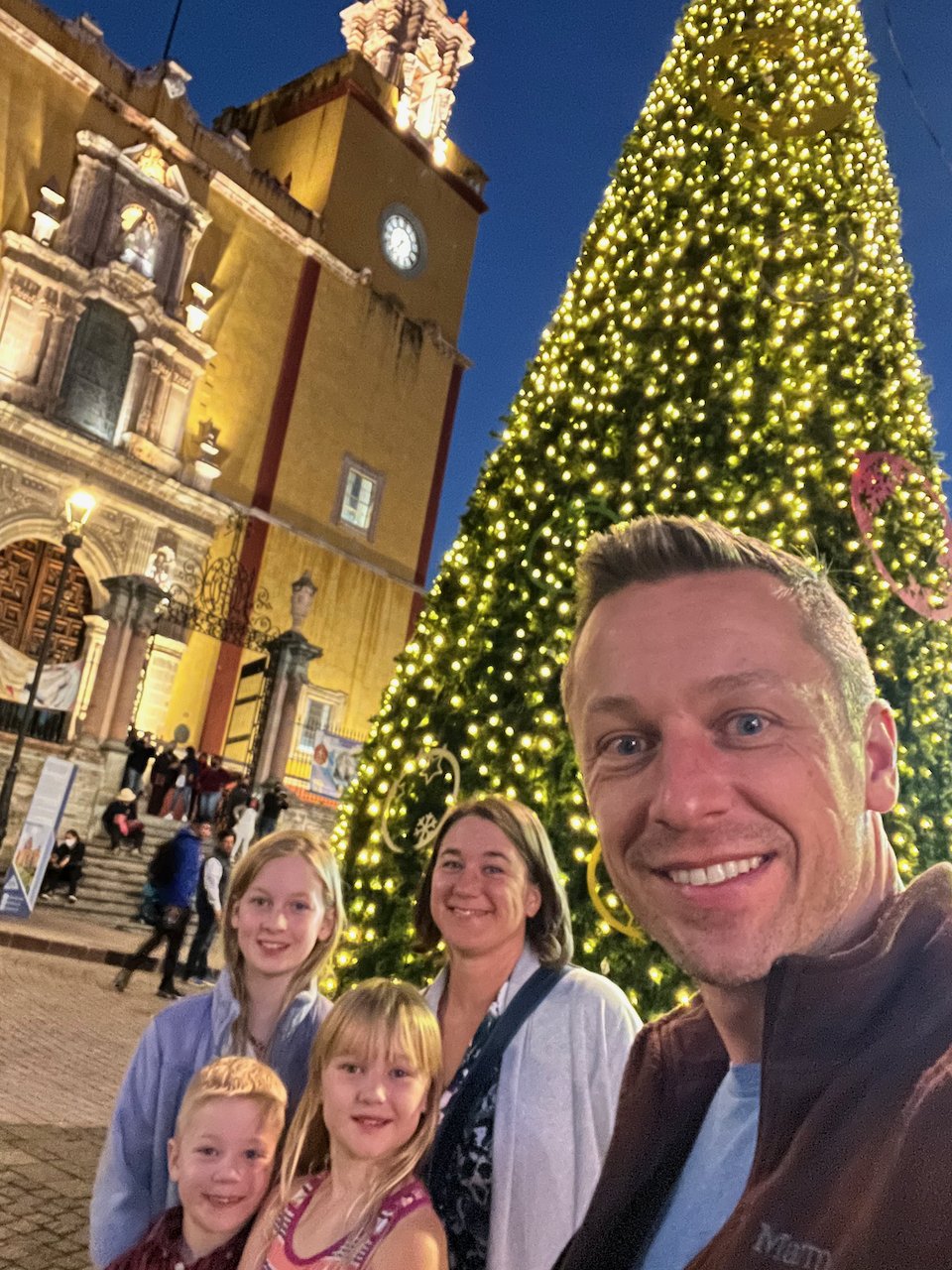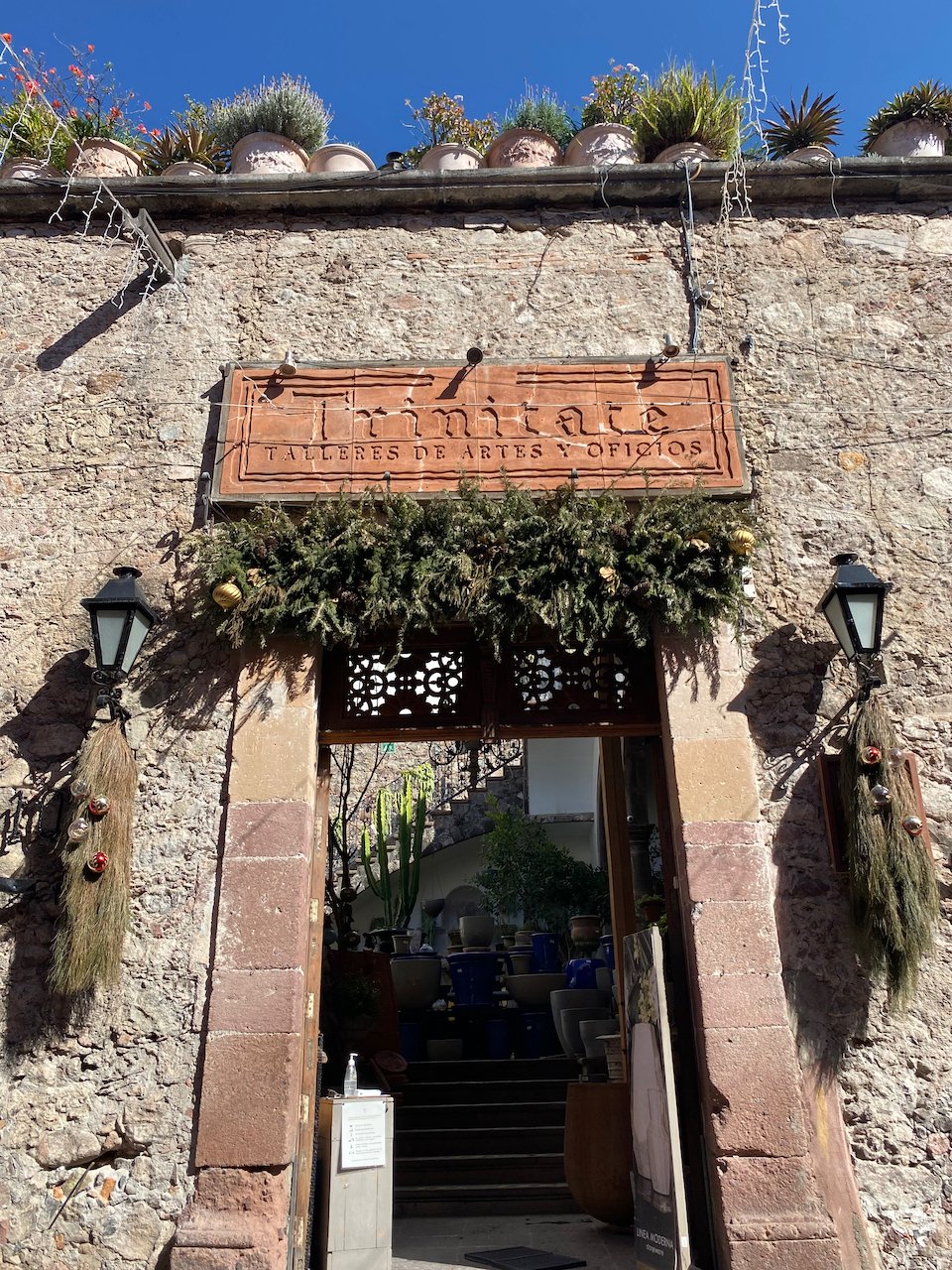The city’s historical center as viewed from the El Pipila Statue.
Our ferry ride from the Baja Peninsula over to Mazatlan was quite comfortable and very easy. The biggest challenge was understanding the instructions being given over the loudspeakers during the docking portion. Only a single driver could go to the vehicle deck, so Erik drove off and the kids and I lugged some of our bags off the boat when it was our turn to go. Since there were many other passengers on foot, we just followed the crowd.
We decided to hit the road right away and start driving towards Guadalajara. It was going to be a 6 hr drive and it was already after 10 am. Right away we noticed how the landscape of Sinaloa was greener and richer. We followed the ocean south for a few hours keeping the green mountains to our left. We passed farms and orchards and thick forest. Sinaloa is the state in Mexico best known for its diverse agriculture. It’s called the breadbasket of Mexico. We could see from the highway the various types of fields and fruit trees. After passing into Nayarit, we began to leave the sight of the ocean and head inwards (heading east) and upwards (into the mountains). The wheat and cornfields were replaced by blue agave fields. This is the plant used to make tequila. We climbed out of the hot weather and into the lovely weather of the lower Sierra Madre Occidental mountain range and passed a number of dormant volcanoes with their prototypical conical shapes. The highway remained smooth and well-kept as it twisted up and around and down with the changing terrain.
We approached Guadalajara by the dinner hour which meant that we also hit evening traffic. The final 20km took an hour. Our hotel for the evening was right downtown in the historical centre. The front door is on a cobblestone road that looks like it is meant only for pedestrians. Plus, it was full of pedestrians. We pulled over at the door but still blocked the road (the downfalls of a big vehicle) and the staff worked hard to find a parking spot for us (their underground parking was too low for our cartop carrier). While Erik worked out the truck issue, the kids and I were shown up a grand staircase, along a balcony, and into a high-ceiling room with 3 large beds and two big shutter-door windows looking out onto the cobblestone street. We all felt a bit like royalty in such a grand place. We spent a few hours having dinner and walking around the city centre. With only one evening, we didn’t see nearly as much as we could have. Guadalajara seems to be a lovely place to explore and we’d have appreciated more time.
At some point in the night, around 3 am, I believe, delivery trucks and garbage trucks arrived to clear, clean, deliver to the businesses in the center. I know this because I am a light sleeper. Then at around 6 am, someone sweeping the sidewalks was also playing loud mariachi music and singing along. I would usually appreciate the cultural authenticity of the moment, however, hearing the music at 6 am was a bit much. Surprisingly, the kids slept through it. We started our day with a big breakfast and couldn’t wait to reach our next home in Guanajuato so we voted to just get going. Sorry, Guadalajara.
Our drive into Guanajuato seemed to take too long, as it always does when we’re excited to arrive. We pushed on through lunch having had a big breakfast. We arrived and met our host at the bottom of a steep lane. She took Erik and the kids up the lane to see the house while I stayed with the truck and started unloading. We were blocking other parked cars, and it had been a tight squeeze into the alley, so I was crossing my fingers that no one showed up wanting to get their car out. Then we began carrying our bins and bags and boxes of belongings up and up and up the alley and then up the stairs in the house. It took a while, but we did it, including struggling up the alley with the truck’s fanny pack. Ugh. Parking was a bit tricky but we found a spot a few hundred meters away from the alley.
The house was beautiful. It had two large, sliding glass doors out onto a grassed garden with a huge treehouse. The kitchen and living room were bright and spacious. The three bedrooms had lots of space and there was even a room with a window seat and floor cushions, a bookshelf, and a toy shelf perfectly suited for the kids’ things. The spiral, metal stairs were lit with a big sunroof, and we could see the colourful buildings of the city from every window.
Guanajuato is built in a valley and has a history as a mining town. Many of the drainage canals have been converted into underground roads making the narrow and winding surface streets better used for single-lane traffic and pedestrians. Buildings stretch from the city centre up and along the valley sides. Each home is painted a bright colour and the alleys connecting these homes are narrow and fun to explore. We quite enjoyed just walking around, seeing what we could find. Many of the city squares had trimmed, cube-shaped trees and were decorated for Christmas. The city had a busy, but not hectic, vibe. There is also a funicular that takes you up to a perfect vantage point from which you can appreciate the sprawl of colours of the city.
We quickly settled into a new rhythm of life which included almost daily walks down the alley to the very close bakery, fruit stand, and coffee shop. Fresh foods were abundant and close by so we had no reason to stock the fridge. We made guacamole often as the avocados were ready to use when you bought them and the cilantro was free. Yes, free. As it was explained to us, the Mexican government decided to subsidize cilantro farmers after conflicts arose over competition for land and pricing. The herb’s global popularity drove up demand and the government needed farmers to keep some land for other staple crops. So, the government set the base costs to farmers, made it free to residents, and we got to benefit from its yumminess.
Our culinary curiosity continued throughout our stay and we found a Hungarian food stand that made these awesome sandwich cones in either sweet or savoury. We had tasty tortas from a popular spot called Don Betos. We also found awesome food at the food trucks that frequent La Presa on Saturday nights. The best burgers in town were only a 3 min walk from our front door at La Burguesa de la Presa, and at lunchtime, a number of food carts would set up in the area to feed the state government workers in their nearby offices. We bought 15 tacos one day, three tacos each, and the whole meal was only $10. It’s almost cheaper to eat out than to cook sometimes.
We were very lucky to find Luci on Facebook who agreed to be our Spanish teacher for the month. She was really passionate about her culture and her city and taught us so many interesting things about the area and also about the traditions around Christmas. Right away, Luci realized the kids had enough confidence in their Spanish that they could take part in a small community play. She was a member of the group and they were in need of a few more kids to play shepherds. So she encouraged them to join her at the next rehearsal. We drove to a nearby neighbourhood and were shown an outdoor stage with theatre seating. Nature had begun to take it over again with a pile of soil left from heavy rain and prickly plants sprouting up from the cracks. Everyone pitched in and worked to clear the soil and plants for 20 min before practice. We helped and then sat to watch the rehearsal. When it was time for the shepherds to go on stage, Luci called the kids to come down. They were unsure and shy but quickly started to get into the spirit. Claire was assigned three lines to say. Molly was given two, and Simon was given one. The director and leader of the group (also the writer of the play) was Juan Jose Prado Viramontes, a retired theatre professor and famous Mexican stage actor, welcomed the kids with a big smile. The other local children quickly started practicing their English and everyone became quick friends. From there, the kids were hooked. Two days later with only one other practice, the play was performed under spotlights for roughly 40 people. The story was a Christmas comedy with Mary and Joseph trying to make their way to Bethlehem and the devil trying to thwart their journey. The parallel main story was of two friends trying to find common ground and strengthen their friendship despite a difference of opinion. I was so proud of them for being brave enough to participate. They had huge smiles on their faces when the play ended and that was so awesome to see! What a great opportunity this turned out to be.
Luci also taught the kids to make hot chocolate right from the cocoa bean including roasting the beans, peeling them, grinding them, and mixing the powder with hot milk. She also taught us about piñatas and their significance around Christmas. We had seen these in many places, including at our hotel in Guadalajara, but thought they looked like mardi gras decorations: a central sphere with colourful, protruding cones like spikes. She explained that many believe the piñatas symbolize our souls. Each of the attached cones represent a sin or something negative about ourselves. Inside the sphere is something nice and sweet (not always candy) which represents our good and true selves. On or around Christmas, you whack the crap out of your negative spikes to release the sweet self. Her and the kids worked hard over two days to make their own piñatas. On Christmas day, the kids gave their hard work a good whipping.
Luci also took us to a nearby town with a lovely river and we played Spanish games and worked on describing things we saw (in Spanish of course). We really enjoyed our time with her and also learning more about local traditions.
Speaking of traditions, there was one tradition that our whole family was not thrilled about. Firecrackers. Before modern communication, villages would use drums to communicate when a festivity was taking place. Apparently, the drums have been replaced with firecrackers and fireworks – not necessarily in the literal sense, but sending out loud booms to announce a celebration is still enjoyed. During the month of December, there are a few days that are celebrated specifically as part of Christmas, but there are also many group parties and gatherings. We would hear firecrackers almost every day, mostly in the evening and at night. The booms would echo in the valley. Some would rattle the windows. And every boom would startle a dog or two who would begin barking and would start a cacophony of other dogs. The loudest night was on Christmas Eve and the loudest morning was La Dia de la Virgen de Guadaloupe, Dec 12th.
The Day of the Virgin of Guadaloupe is a day when an apparition of the Virgen Mary appeared at a spot in present-day Mexico City. She was clothed like a Mayan woman, which was very significant in helping bring together the traditions of the Mayan cultures and Christianity. Today, millions make a pilgrimage to the altar built at the location of her sitting, or to the many shrines built for her hence, and will give offerings and ask that she protect and bring good fortune to those who worship. We walked up a long and steep road to the church in the city with a Virgen de Guadaloupe shrine. We saw many children were dressed in formal, traditional clothing. Small moustaches were drawn on the faces of the young boys. The girls carried flowers and fruits to the altar. There was a feeling of duty and pride among the crowds. We stayed outside of the church but watched hundreds of others arrive, enter, and depart empty-handed. Then we heard some drumming and saw some traditional Aztec dancers performing in celebration. It was such a pleasure to see a city celebrate together.
Guanajuato grew on us quickly and is high on our list as somewhere we’d enjoy coming back to for a lot more time. We filled our days with walks and trips to the markets and playing with the neighbour’s dog. We were a 15min walk to a market that had a number of used clothing vendors. The girls really enjoyed rummaging around in the piles of clothes and then getting excited to find something nice in their size. Most items were $5 or less. We found a few great items for a dollar or two. It was like a treasure hunt every time we went. The kids also noticed that some of the clothes would have English sports team names or the names of marathons in the US. They found it strange that vendors in Mexico would be selling a shirt that was given to someone who ran a race in Boston five years ago. That opened up a discussion about clothing, donated clothes that no one seems to want, and how countries like Mexico end up getting bundles and bundles of random batches of clothes. That then led us into a discussion about excess in general – why buying new clothes often leads to piles of waste – and how excess products of all sorts are piling up in the world. They also started to feel bad for not buying something from the vendors because they knew that the vendors also need money too. These are some of the tough topics that can arise through travel, especially if you live in a place where social inequality isn’t as glaringly obvious.
We also discovered some great hiking trails and caves up in the mountains. Erik and I walked the steep and challenging trail to the top of the Bufa where a cross is erected and a small shrine has been built. With the kids, we chose to stay along the lower trail and explore around the mountain’s peak. Both spots offered awesome views and great exercise.
For Christmas, we kept a few of our own family traditions in place, including making cookies, but also tried some new ones. We walked into the city to see some nativity scenes at night on Christmas Eve and enjoyed the lights and the excitement in the air. It was just the five of us for the holiday, and although we were missing our family in Canada, we were grateful for each other. Santa found us in Mexico and the kids were thrilled. This was our first Christmas without snow or cold weather. We drank fizzy water instead of hot apple cider. We played in the treehouse instead of skating on the canal. And we heard lots and lots of fireworks instead of cuddling under blankets in the quiet country. We whacked piñatas instead of building snowmen. We ate chicken instead of turkey with sweet bread instead of stuffing. We enjoyed it all.
Just before leaving the city, we took a day trip to San Miguel De Allende, a city that has, since the 1980s, been a favourite place for expatriates. It is known for its cleanliness, beauty, and its art scene. We drove into the city centre to an art market that turned out to be upscale galleries. We then wandered over a km-long alley that was exclusively market stalls with a mix of tourist trinkets and unique artistic creations. We found one lady who makes purses using pop can tabs and colourful twine. I was particularly pleased to see the extra sanitation measures in place even for an outdoor space. At the entrance of each section of the alley, someone was checking temperatures, giving sanitizer, and insisting on facemasks. We also wandered into the main square and found some cheap and tasty ice cream; four cones and a fancy popsicle were only $6. Our time ran out to keep exploring so we wandered back to our truck through a few side streets and kept discovering neat little spots like fancy restaurants, a leather goods store, and a space for musicians to gather and jam. We noticed many more tourists walking around San Miguel than we’d seen in Guanajuato and heard more conversations in English than in Spanish. We’re glad we made the trip to see the city but also glad we’d picked Guanajuato as our temporary home.
As the New Year arrived, so did our time to move on. We dragged our bins and bags and boxes back down the alley (much easier than up) and packed up Chuck. On Dec 31, we left Guanajuato in search of the next Edventure.


